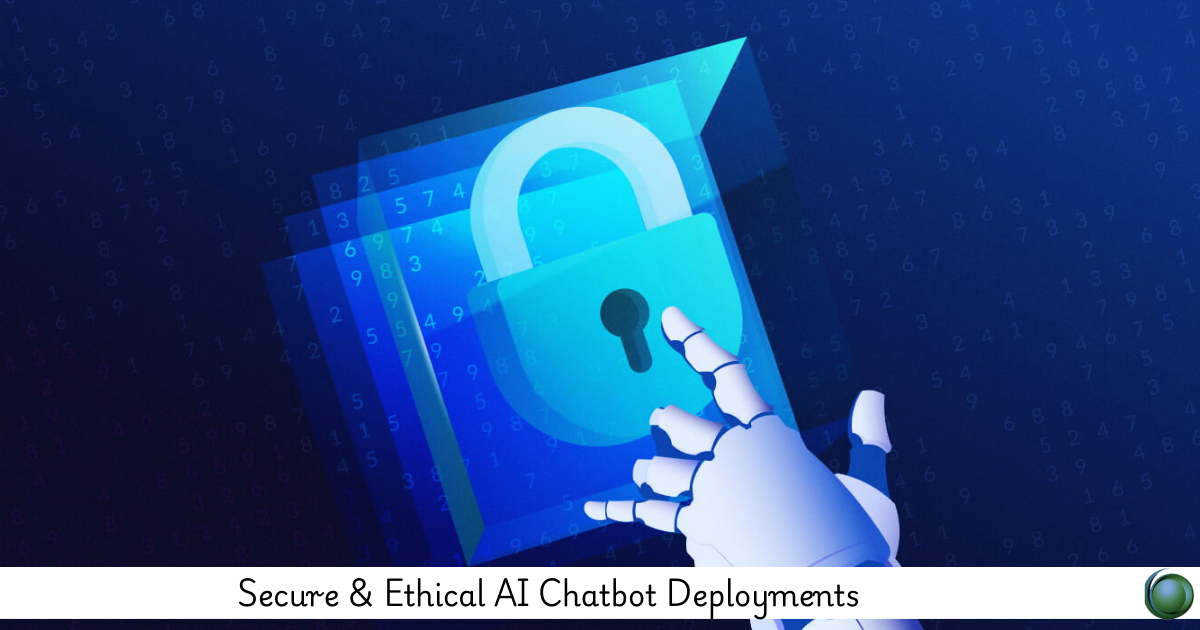Description
Introduction
As AI-powered chatbots proliferate across sectors like banking, healthcare, retail, and government, security and ethics must be treated as foundational design pillars. This course provides a comprehensive blueprint for deploying chatbots that are trustworthy, compliant, bias-resistant, and resilient to threats—ensuring both user protection and organizational credibility.
Prerequisites
-
Knowledge of chatbot frameworks (Dialogflow, Rasa, or similar)
-
Familiarity with AI/ML models and how chatbots are trained
-
Basic understanding of cybersecurity fundamentals
-
Awareness of data protection laws (e.g., GDPR, HIPAA, CCPA)
Table of Contents
1. Security Foundations for Chatbots
1.1 Overview of Security Risks in Conversational AI
1.2 Real-World Breaches and Lessons Learned
1.3 Types of Threats: Input Injection, Spoofing, Data Leakage
1.4 Defense Mechanisms: Authentication, Token Management, OAuth
1.5 Security by Design vs. Security by Obfuscation
2. Privacy Compliance and Data Handling
2.1 What Data Should Your Chatbot Collect?
2.2 Anonymization, Tokenization & Encryption Techniques
2.3 Privacy Impact Assessments (PIAs)
2.4 Complying with GDPR, HIPAA, and Local Privacy Laws
2.5 Consent Management and User Control Mechanisms
3. Ethical AI: Principles in Practice
3.1 Why Ethics Matter in AI Systems
3.2 Responsible AI Guidelines from Google, Microsoft, and OECD
3.3 Transparency: Explainable AI for Conversational Interfaces
3.4 Avoiding Misleading UX (“Dark Patterns”) in Chatbots
3.5 Setting Expectations: Disclosing Bot Identity and Limitations
4. Bias Mitigation and Inclusive Design
4.1 Types of Bias: Dataset, Algorithmic, and Interaction Bias
4.2 Tools for Bias Detection in NLP Models
4.3 Designing for Accessibility: Multilingual, Voice & Assistive Support
4.4 Diversity in Training Data and Personas
4.5 Avoiding Cultural Insensitivity and Offensive Language
5. Abuse Handling and Safety Controls
5.1 Filtering Toxic, Violent, or Inappropriate Content
5.2 Handling Misinformation and Sensitive Topics
5.3 Creating Safe Escalation Paths to Human Agents
5.4 Monitoring User Behavior for Threat Patterns
5.5 Child Safety and Age-Appropriate Design
6. Governance, Monitoring & Risk Management
6.1 Security Audits and Logging Best Practices
6.2 Data Retention, Disposal, and Backup Policies
6.3 Role-Based Access and Zero Trust Architecture
6.4 Ongoing Monitoring for Anomalies and Attacks
6.5 Policy Enforcement: Internal Governance vs. Third-Party Risks
7. Deployment & Lifecycle Security
7.1 Secure Coding Practices for NLP & Chatbot Logic
7.2 DevSecOps in AI Pipelines
7.3 Continuous Threat Modeling and Testing
7.4 Incident Response Plan for Chatbot-Specific Risks
7.5 User Feedback Loops for Ethical & Secure Improvement
8. Industry Applications and Case Studies
8.1 Healthcare Chatbots: HIPAA Compliance & Data Sensitivity
8.2 Banking & Insurance: Preventing Fraud in Conversational Flows
8.3 Retail: Personalized Interaction vs. User Privacy
8.4 Public Sector: Transparent AI for Citizen Services
8.5 AI Ethics Boards: How Leading Enterprises Govern Conversational AI
Securing and ethically managing AI chatbots goes beyond just avoiding fines or bad PR—it’s about building systems users can trust. Organizations that prioritize security, privacy, and ethical integrity from day one not only reduce risk but also elevate their brand and deliver better experiences. This course empowers developers, architects, and decision-makers with the frameworks, tools, and strategies needed to ensure that conversational AI deployments are resilient, fair, and future-ready.







Reviews
There are no reviews yet.